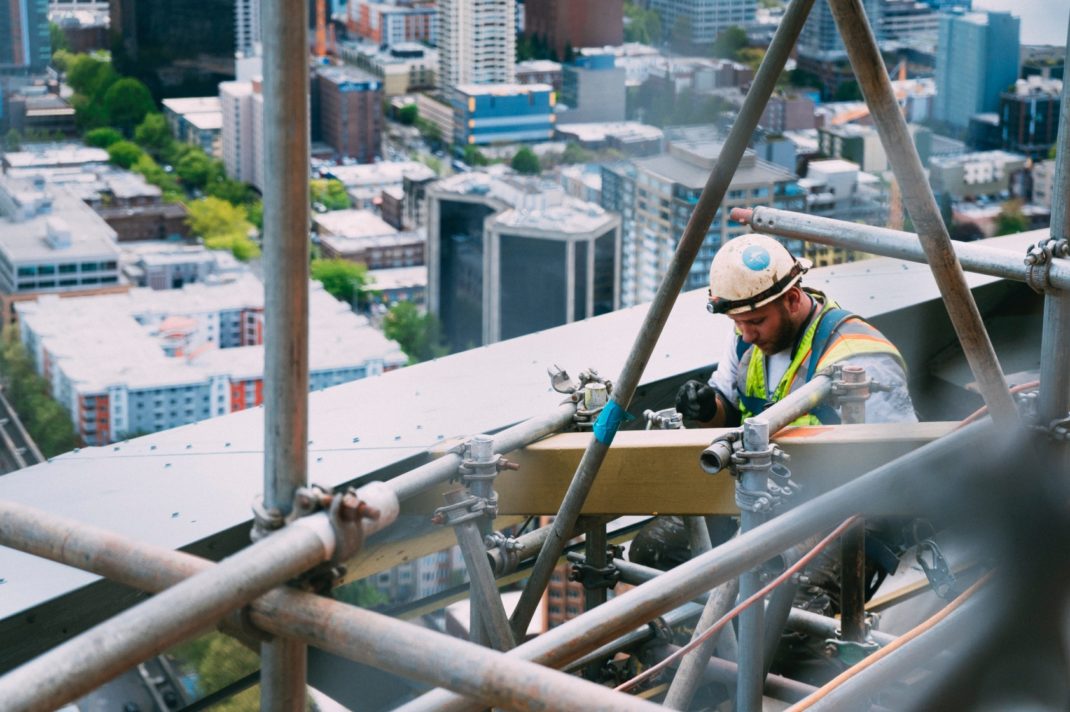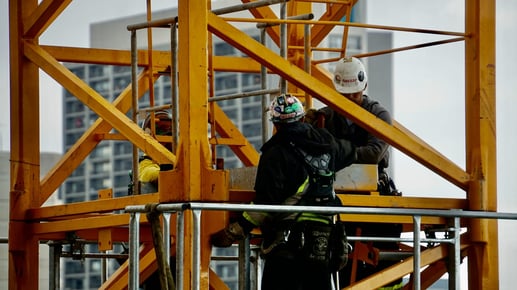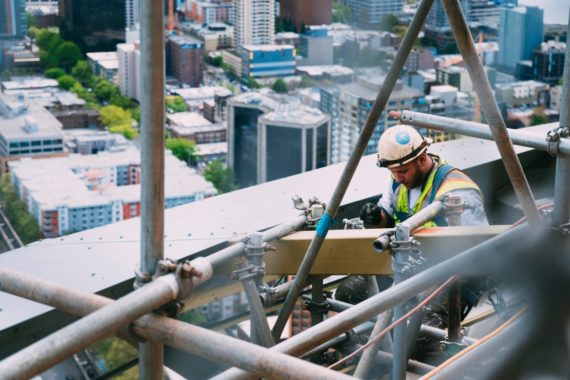
5 Must-Have Materials & Products for Building Envelope Systems
16 minutes read
Brendan Garvin
Sep 6, 2024 9:30:00 AM


Whether you're battling the blazing heat of summer or the biting chill of winter, safeguarding your structure from the elements is crucial.
Too many project stakeholders overlook the importance of the building envelope, yet focusing on it can transform a project.
It's not just about aesthetics; the envelope of a building plays a key role in user comfort, energy efficiency, preventing fungus, and maintaining long-term structural integrity.
The journey begins with the right building envelope materials, and that's exactly where any savvy project manager should start!
What Is a Building Envelope?
The building envelope is the structural “skin” that acts as a barrier between the interior of a building and the outside environment. It consists of all the elements of the outer shell that work together to protect the building from external forces such as weather, temperature, air, moisture, and noise while maintaining a comfortable and controlled indoor environment.
Key components of a good building envelope design include:
- Exterior walls: These provide insulation, structural support, and protection from the elements.
- Roofing systems: Essential for sheltering the building from precipitation, heat, and cold.
- Windows and doors: Points of entry and ventilation that must balance accessibility, natural light, and energy efficiency.
- Sealants and barriers: Materials like air, vapor, and weather-resistant barriers help prevent air leaks, moisture infiltration, and thermal loss.
- Foundations: The building's base, which plays a vital role in controlling ground moisture and structural integrity.
A well-designed building envelope is crucial for energy efficiency, as it minimizes heat loss during the winter and keeps cool air inside during the summer. It also helps prevent issues like mold, water damage, and air leakage, which can compromise both the building's durability and the health of its occupants. In modern building envelope construction, enhancing the building envelope with high-performance materials and advanced insulation techniques leads to improved sustainability and long-term cost savings.
5 Needed Building Envelope Systems Materials in Commercial Work
Building envelope systems are designed to provide a protective barrier between the internal environment of a building and external factors such as weather, noise, and air pollution. The key materials often used in these systems include durable insulation, weather-resistant membranes, and high-performance glazing, each selected for their ability to enhance thermal performance and control moisture.
By integrating these components effectively, project managers can ensure that the building envelope is functional and contributes to overall energy efficiency and occupant well-being.
Building envelope systems and materials you should treat as must-have tools for your kit include:
- Air & vapor barriers and flashings
- Waterproofing products
- Curtain walls
- Structural glazing — weather sealing & insulation
- Joint sealants
1. Air & Vapor Barriers and Flashings
You can handle air and moisture — from the roof and everything below — with various building envelope products.
Barriers offer broad coverage of a section of a building. It's common to lump together certain types inaccurately, so make sure you know what you're buying:
- Air barrier — controls the flow of air in & out
- Vapor barrier — stops the diffusion of droplets through walls, ceilings, & floors
- Weather-resistant barrier — blocks rain & wind; allows moisture inside to escape
Flashings weatherproof a specific area of the structure. They direct water away from areas that are prone to infiltration.
Consider placing them at any joint or transition a regular barrier might not cover appropriately. Examples include windows, doors, and roof edges.
The right barriers and flashings can turn a building enclosure into a warm safety blanket of sorts — for people and the structure itself.
2. Waterproofing Products
In contrast, a wet blanket serves little purpose.
To the building owner, the basics of below-grade waterproofing may be the most important skills in a subcontractor's arsenal. Getting waterproofing right the first time — below and above ground — will mitigate future repair costs, and an effective restoration job can extend a building's life by decades.
Just as contractors use waterproofing membranes on a roof, they can exist on walls, windows, and more.
The thin layer of sheet or liquid forms a moisture-tight, vapor-controlling shield. Concrete is porous, making it crucial for protecting from cracking and mold/mildew growth.
Drainage composites are also viable waterproofing solutions in several places in and around buildings, preventing buildup and damage. For heavy-duty areas, hot rubberized asphalt can eliminate seams on systems such as roofs, thus reducing leaks and maintaining a pleasing look.

3. Curtain Walls
Just because a building component is nonstructural doesn't mean its value is merely skin-deep.
There's a mile-long list of solutions for improving a building envelope design for both form and function. Curtain walls belong on that list. A curtain wall consists of two external cladding components: frames and infills.
A curtain wall frame doesn't carry any structural load but can contribute to the fight against water, temperature, and UV threats. Framing material is most commonly either:
- Aluminum — high strength-weight ratio; naturally corrosion-resistant
- Steel — can support larger wind and glass loads
- Wood — a unique aesthetic
A curtain wall infill (aka spandrel panels) also affects the overall sustainability of your creation, in addition to its looks. This component goes between each mullion, with options including:
- Glass — customizable color and visibility
- Metal — can withstand harsh conditions with little maintenance
- Stone — a timeless look
- Windows & vents — use depends on building requirements & aesthetic tastes
- Louvers — Manages airflow & light for energy efficiency

4. Structural Glazing — Weather Seal and Insulation
The curtain wall is only one of several popular glazing systems. Structural glazing is imperative in controlling the elements and conserving energy.
All these glass walls, large windows, and metal panels don't stay up by themselves. A wealth of components and assembly products exist to secure the building envelope against gradual wear and sudden water intake:
- Glazing tape — adhesive coated on one or both sides, bonding the glass to the frame
- Structural silicone adhesives — high-strength sealants specialized for insulating load-bearing glass
- Weather seals — keep out water, air, & other elements
- Gaskets — stop ingress during downpours and heavy winds
- Spray foam — plastic used to insulate gaps and cracks from air, heat, & cold
In modern construction, structural glazing products help meet both the architect's ambitions and the need for thermal and structural performance.
5. Joint Sealants
Air and water leaks invite moisture damage, create a breathing hazard, and suck the energy efficiency out of a building. Joint sealing fills the dangerous gaps between two substrates — a crucial step in weatherproofing a building from these threats.
You can and should find joint sealants nearly everywhere on a construction site:
- Between panels
- Around windows & doors
- Termination points
The debate about which sealant to use is almost always between silicone and urethane.
Silicone Sealants |
Urethane Sealants |
|
| Wear Resistance | Moderate | High |
| Flexibility | High | Moderate |
| Adhesion | Moderate | High |
| Cure Speed | Low | High |
| Life Span | High | Low |
Joints — some more so than others — also need to allow a degree of movement. For example, a precompressed foam expansion joint can seal any gap weathertight, even in areas with seismic activity or frequent thermal expansion and contraction.
Picking job site-appropriate materials is a must for high-quality exterior envelope construction.
Frequently Asked Questions About Building Envelope Systems
How Do I Determine Which Air and Vapor Barrier is Most Suitable for My Specific Project Conditions?
The choice of air and vapor barriers depends on the climate and the building’s function. For colder climates, a vapor barrier might be essential to prevent condensation inside the structure, while in humid environments, controlling air movement and moisture diffusion through walls is crucial. Consulting with suppliers and reviewing building codes specific to your region will guide the best choice for your project. Additionally, understanding the building’s use will help ensure you're choosing materials that balance breathability with moisture control.
What Are the Best Practices for Installing Below-Grade Waterproofing to Prevent Future Repair Costs?
Proper preparation is key for below-grade waterproofing. Begin by selecting waterproofing membranes or liquid sealants suited for below-grade applications. Ensure all surfaces are clean and dry before applying, and consider using drainage composites to manage water flow around foundations. Pay special attention to seams and joints, as these are common failure points. Hot rubberized asphalt can be ideal for seamless applications, reducing the chance of leaks. Regular inspections and maintenance post-installation will help identify issues early and extend the life of the waterproofing system.
How Do I Choose Between Aluminum, Steel, or Wood Framing for Curtain Walls Based on My Project's Specific Environmental Factors?
Aluminum is lightweight, corrosion-resistant, and best for projects requiring a high strength-to-weight ratio. It performs well in areas exposed to harsh weather conditions. Steel, on the other hand, is stronger and can bear larger wind loads, making it ideal for taller structures or in areas with extreme weather conditions. Wood, while offering a unique aesthetic, requires more maintenance and is best suited for environments where visual appeal is key, and durability isn’t compromised by the elements. Review environmental exposure, maintenance costs, and project aesthetics to make the right decision.
What Are the Key Differences in Performance Between Silicone and Urethane Joint Sealants, and How Do I Decide Which One to Use?
Silicone sealants offer higher flexibility and better resistance to weathering and UV rays, making them ideal for exterior applications where movement or expansion is expected, such as around windows or in areas with seismic activity. Urethane sealants, while less flexible, have superior wear resistance and adhesion, making them better for high-traffic areas or locations needing a stronger bond. If your project is in an area with frequent temperature changes or movement, silicone may be the best choice, while urethane is preferable in heavy-duty applications.
How Do I Integrate Energy-Efficient Structural Glazing and Curtain Walls Into An Overall Sustainable Building Design?
Start by selecting glazing systems that feature low-E coatings or insulated glass units (IGUs) to reduce heat transfer and improve thermal performance. Structural silicone adhesives can help insulate load-bearing glass, while weather seals and gaskets are crucial for preventing air and water infiltration. Incorporate operable windows or louvers into curtain wall designs to regulate airflow and minimize the need for mechanical ventilation, thus improving energy efficiency. Align these systems with other energy-saving elements like solar shading or renewable energy sources to maximize sustainability across the building envelope.
Finding the Building Envelope Products to Match
The only thing more important than understanding building envelope protection is the quality of supplies you use to create it.
Building envelope solutions exist by the thousands. Start with the five categories above, and consult with a distribution expert on the product types and job sites unfamiliar to your team.
To see the top suppliers today in each product category, visit our Manufacturers page:

